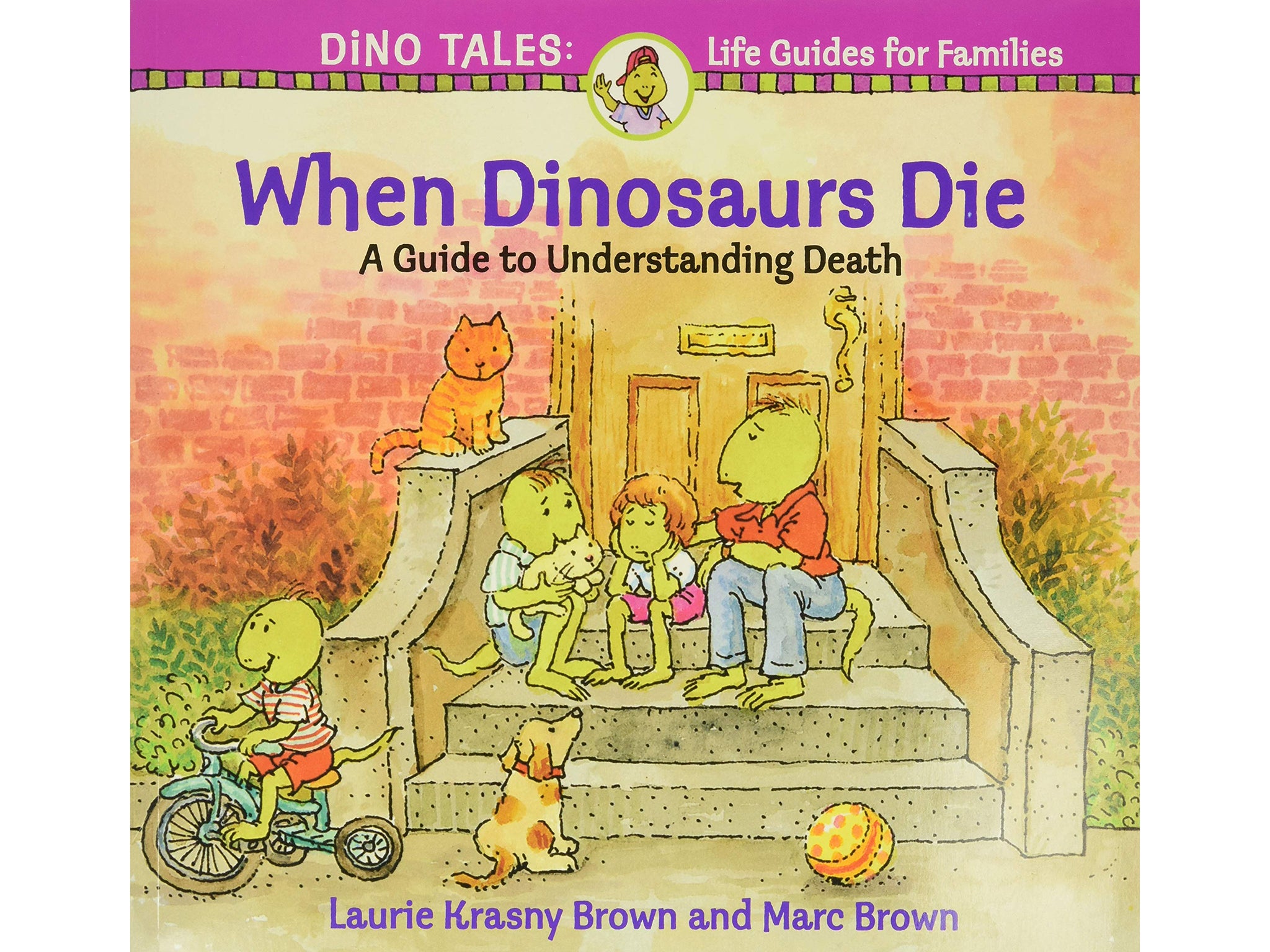The Independent's journalism is supported by our readers. When you purchase through links on our site, we may earn commission.
Five picture books to help teach young children about death
In what has been a difficult year for everyone, Maggie Jackson recommends picture books to help parents talk about death

Your support helps us to tell the story
From reproductive rights to climate change to Big Tech, The Independent is on the ground when the story is developing. Whether it's investigating the financials of Elon Musk's pro-Trump PAC or producing our latest documentary, 'The A Word', which shines a light on the American women fighting for reproductive rights, we know how important it is to parse out the facts from the messaging.
At such a critical moment in US history, we need reporters on the ground. Your donation allows us to keep sending journalists to speak to both sides of the story.
The Independent is trusted by Americans across the entire political spectrum. And unlike many other quality news outlets, we choose not to lock Americans out of our reporting and analysis with paywalls. We believe quality journalism should be available to everyone, paid for by those who can afford it.
Your support makes all the difference.However uncomfortable we may feel about the subject, death is in the news at the moment. Many of us have lost people during the pandemic and, even if we want to shield children from hearing or knowing about death, it seems unlikely that we can.
As adults we may hope that our children won’t be aware of death and that we can protect them from it. However, it is important that we support them in their understanding by allowing them to ask questions and be curious.
One source of help with children between the ages of four and seven is the picture book. Since the 1980s, there has been an explosion in the production of good quality picture books often dealing with difficult subjects. The picture book is an incredible resource as the illustrations provide sources of information without the need to be able to read text. Reading picture books is often a shared event. Seated side by side with an adult, a child can listen to the words and explore the pictures and see and be curious about the images presented.
Read More:
It has been suggested that their value lies in the fact that the pictures can provide material not explicit in the text, allowing the child to construct the story in their own way and to ask their own questions. The pictures do not just simply offer a matching illustration of the text but, provide a story on their own, allowing for curiosity and for the child to guide the adult.
Here is a selection of picture books which can help parents begin to have conversations about death and how we might feel about it with young children:
Beginning to talk about death
In When Dinosaurs Die: A guide to understanding death, we are given a series of small frames in which different aspects of death are considered, allowing a young child to look at the pictures and pose their own questions. The little dinosaurs ask about a wide range of things concerning death such as: what happens at funerals? Why do people die? And also how might we feel about death?

In similar way Frog and the Birdsong looks at general questions about death. This brightly coloured book shows us a group of animal friends who come across a dead bird while they are out for a walk. They ask many pertinent questions, as might a child, and are helped to find the answers by a more knowing hare. The friends then bury the bird and shed a tear before going on their way.
These two books offer a supportive and safe way of thinking about death – they do not look at the pain of loss or grief and perhaps can thus be a helpful way to begin to talk about death.
Broaching the idea of loss
Some books that may help to begin to address the subject of loss are about the death of a pet. This is no less painful and serious but, sometimes seen as easier to talk about. Lovely Old Roly and Harry and Hopper are two such examples. In each book we are told about the death of the pet and the sense of loss and emptiness felt by the children. Roly’s children feel so sad they are unable to play or do any routine tasks. Harry misses Hopper so much that he yearns for his return and imagines or dreams that he has returned. In each book we see that eventually the children begin to feel OK but are reminded they will never forget.
Read More:
Understanding grief
The Heart and the Bottle is perhaps more difficult as it deals with a little girl who does not feel able to talk or let herself feel anything. In it we are shown very directly the shock of the little girl when she walks into a room expecting to find her grandfather but sees only his empty chair. The little girl is unable to talk about her unhappiness and so shuts her heart away. This book can allow a child to see that it is better to acknowledge the pain and to let others see how much it hurts.
Maggie Jackson is a senior lecturer in the school of Social Sciences Humanities and Law at Teesside University. This article first appeared on The Conversation.
Join our commenting forum
Join thought-provoking conversations, follow other Independent readers and see their replies
Comments